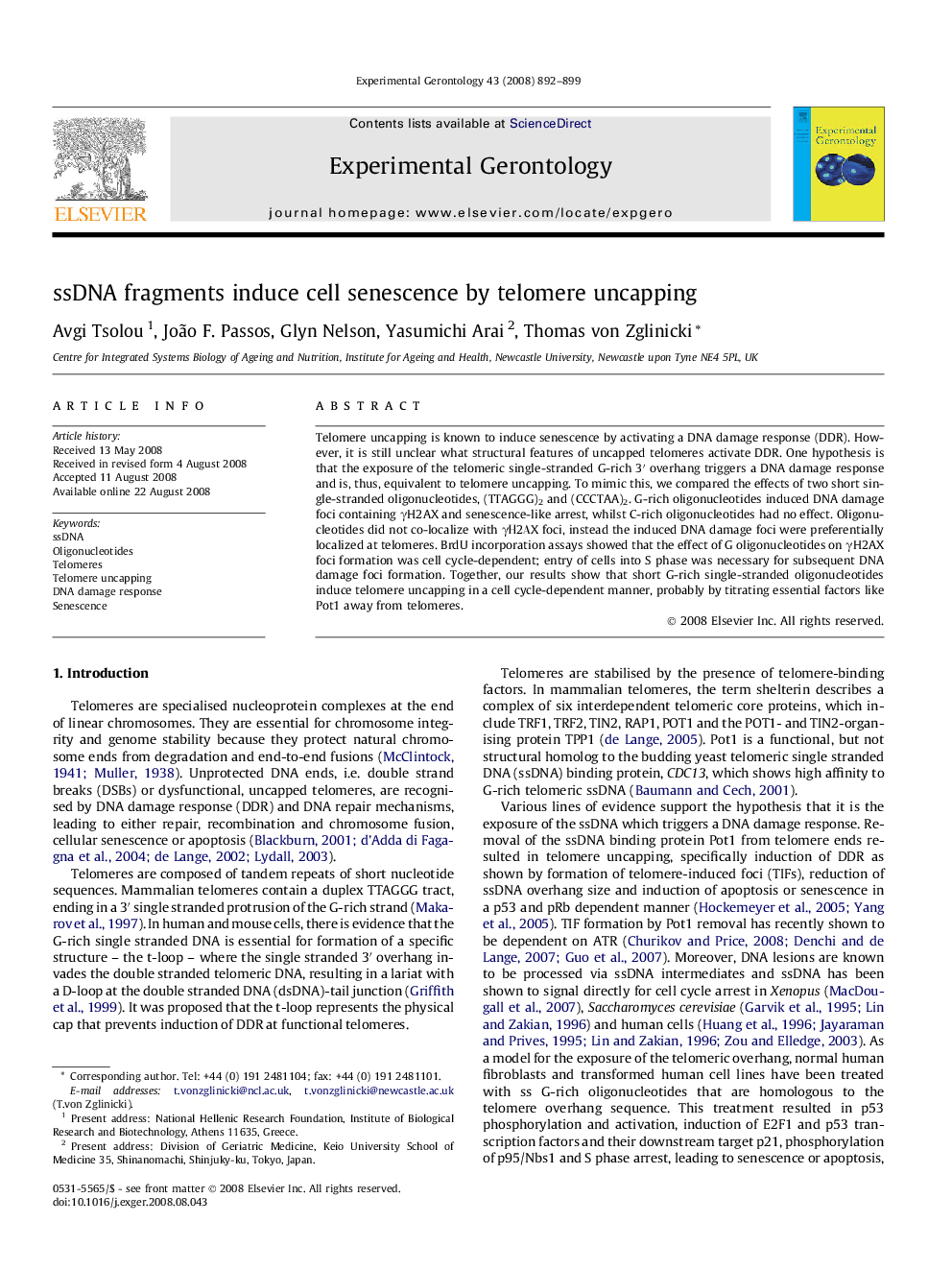| Article ID | Journal | Published Year | Pages | File Type |
|---|---|---|---|---|
| 1906998 | Experimental Gerontology | 2008 | 8 Pages |
Telomere uncapping is known to induce senescence by activating a DNA damage response (DDR). However, it is still unclear what structural features of uncapped telomeres activate DDR. One hypothesis is that the exposure of the telomeric single-stranded G-rich 3′ overhang triggers a DNA damage response and is, thus, equivalent to telomere uncapping. To mimic this, we compared the effects of two short single-stranded oligonucleotides, (TTAGGG)2 and (CCCTAA)2. G-rich oligonucleotides induced DNA damage foci containing γH2AX and senescence-like arrest, whilst C-rich oligonucleotides had no effect. Oligonucleotides did not co-localize with γΗ2ΑX foci, instead the induced DNA damage foci were preferentially localized at telomeres. BrdU incorporation assays showed that the effect of G oligonucleotides on γH2AX foci formation was cell cycle-dependent; entry of cells into S phase was necessary for subsequent DNA damage foci formation. Together, our results show that short G-rich single-stranded oligonucleotides induce telomere uncapping in a cell cycle-dependent manner, probably by titrating essential factors like Pot1 away from telomeres.
